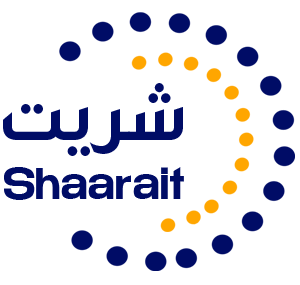This certified training course provides a comprehensive, practical analysis of anti-money laundering legislation and implementation. Therefore, it will help you get to grips with the complexities associated with fraud prevention and the protection of your organisation.


The Professional Certificate CAMC Certified Anti-Money Laundering Consultant ™ in Kuwait
Course Overview:
We are aware of the most current cases on violation of the anti-money laundering regulations and the cost associated to it. The fines imposed by the Regulators are quite severe and damaging to any organisation without mentioning the cost to their reputation.
Virtually every entity suffers from fraud, though management might not know it. With fraud costing entities an estimated five percent of their annual revenues, organizations lacking proactive fraud prevention measures are the most at risk. This course will show you why traditional internal controls can be ineffective in preventing many frauds and how to combat fraud more effectively and economically.
Occupational fraud is a significant threat to any organisation. Those organisations which employ fewer anti-fraud controls are more vulnerable to fraud. Nearly half of victim organisations do not recover any losses they suffer due to fraud.
You will also discover what you can do to protect your company from fraud. Learn about management’s responsibilities for preventing fraud and effective internal controls to aid in this effort. This course will take you further into leading techniques to manage the risk of fraud and cut its ongoing cost for all types of entities.
Course Objectives:
By the end of this training course, the participant will be able to:
- The major sources of money laundering and terrorist financing
- The cross-spectrum of international requirements
- The key components of the legal and regulatory regime
- The practical day-to-day requirements for robust anti-money laundering operations
- Realistic ways of meeting the anti-money laundering obligations placed upon your organisation
- Understand the purposes of internal controls
- Differences between fraud deterrence and detection
- Different types of assets misappropriation
- Identify the red flags of fraud
- Apply suitable controls and policies over assets and revenues
- Develop controls and procedures to minimise the eventuality of fraud
- Identify deficiencies, assess cost/benefit effectiveness and implement a course of action
- How to find the gaps in your fraud prevention processes
- How to mitigate the risk and cost of fraud in your organisation
Who should attend
- Senior managers with responsibility for or involvement in the development or implementation of anti-money laundering policies and procedures,
- money laundering reporting officers,
- compliance officers,
- managers,
- auditors,
- accountants
- risk managers
- staff with duties requiring anti-money laundering compliance,
- any other staff interested in learning more on anti-money laundering
- Business owners,
- Directors and General Managers and
- those responsible for the safeguard of the assets of the organisations, prevention of losses and management of risk of misappropriation.
Course Outlines:
Module 1
Introduction to Money Laundering
- What is Money Laundering and why is important?
- The Money Laundering Cycle
- Legal and Illegal Laundering
- Who Uses Money Laundering Practices
- Advantages and Disadvantages of Transaction Systems to Money Launderers
- Sources of dirty money
- Indications and tell-tale signs
- A Case of Piracy
International Development of Law and Regulation
- The Role of the Financial Action Task Force (FATF)
- European Directives
- US Patriot Act
- UN Resolutions
- The Wolfsberg Principles
- The GCC as a member of FATF
- AML Law and Regulations in the GCC
Know your clients
- Banks & financial businesses
- Investment businesses
- Savings vehicles and regular investment programmes
- Fiduciary services
- Insurance
- Terrorists
Cases and examples:
- The Lansky legacy
- Tricky Dicky
- The treasure of La Mina
Module 2
Money Laundering Schemes
- Use of a Nominee
- Simple Business Cover
- Simple Banking Operation
- Banking-Business Operation
- Banking-Business Combination
Cases and Examples
- The Money Laundering Cycle in the Brinks-Mat case
- How I helped launder £6 billion for the mob
- Money laundering using cash transactions, bank accounts, investment related transactions, offshore international activity
Financial Institutions’ Role in Money Laundering
- Correspondent Banking
- Tools Bank Use to Identify Money Launderers
- Due Diligence Laws for Banks
- Shell Banks
- Currency Transaction Report
- Suspicious Activity Report
- Case study: Shell bank
Module 3
Beginning the investigation
- Developing an investigation plan
- Collecting information
- The Subject Profile
- Profiling the Subject: The Personal and the Business Profile
- Analysing the Information
- Tracing the Assets
Analysing Financial Records for Leads
- Obtaining access to financial records
- Reviewing financial records – examination
- Account-opening records
- Cancelled (negotiated) cheques
- Wire transfer records
- Intrabank transfer records
- Bank statements
- Exchange instruments
- Credit card records
- Accounting records
- Tax returns and related documents
- Loan and mortgage records
- Purchase and sale documents
Locating Assets
- Common vehicles used by asset hiders and what do they want?
- Locating assets using direct methods
- Locating assets using indirect methods
Module 4
Proliferation Financing
- Assessing the threat of proliferation financing
- A foreign trade pattern abused for proliferation
- Elements that may indicate proliferation financing
Diabolically Clever Laundering Schemes
- Smurfs ad Structured Transactions
- Shell Companies
- Offshore Corporations and the Internet
- Loan-Back Schemes
Fiendishly Complex Money Laundering Schemes
- Invoice Scams
- Underinvoicing
- Investigating Invoice Scams
- Buy-Backs
- Investigating a Buy-Back Scheme
- Securities Manipulation
- Documentation
- Investigating a Securities Manipulation
Real Estate – Risks and Compliance
- Use of complex loans or credit finance
- The role of non-financial professionals
- Corporate vehicles
- Manipulation of the appraisal or valuation of a property
- Mortgage schemes
- Investment schemes and financial institutions
- Red Flags indicators
Module 5
The Path to a Greater Corporate Compliance, Accountability, and Ethical Conduct
- Internal Controls
- Anti-fraud Programs
- Internal Fraud – Protecting a Company
- Designing a Robust Fraud Prevention Program
- Whistle-blowers and hotlines
- Background checks and training
- A fraud prevention culture that works
Group session:
- Part 1 – Develop a money laundering investigation plan considering some of the schemes and how you would proceed
- Part 2 – Develop and present to the rest of the group your fraud prevention program
Review and Revision
Programme Close
- Final questions and answers
- Evaluations
Examination
Final Remarks and Closing
Frequently Asked Questions (FAQs)
What are the benefits of attending the training course?
By attending this course, the added benefits you will receive include:
- Successful completion of this course makes you a CAMC Certified Anti Money Laundering Consultant ™
- You can use the designation CAMC ™ on your business card and resume
- Up to 22 month’s membership to the GAFM® professional body
- Access to the GAFM ® network and body of information online
- Preferred access to education centers in USA, UK, Europe, Asia, Middle East and Latin America
- Access to the GAFM ® journal published online
- Gold Embossed Certificate with your name and designation as MGAFM (Member of the Global Academy of Finance and Management)
Is it a certified training course?
Yes, the training course is certified by the Global Academy of Finance and Management, USA www.gafm.com
Is there a prerequisite to get certified?
No, there is no a prerequisite for attending the training course. However, to be certified you should attend the 85% of training and pass the exam successfully.
How the exam looks like?
At the last day of the training there will be a paper-based exam. the exam is about 30 multiple choice questions. The passing score to pass the exam and get certified is 80%.
What is the cost of the exam and the certificate?
The exam and certificate cost are included in the training course’s fees. there is not extra charges.
In case of failure to pass the exam successfully, you can retake the exam for additional 3 times without fees.
How do I know if this program is right for me?
After reviewing the information on the program landing page, we recommend you submit the short form above to gain access to the program brochure, which includes more in-depth information. If you still have questions on whether this program is a good fit for you, please contact us or email us training@shaarait.com, and a dedicated program advisor will follow-up with you very shortly.






